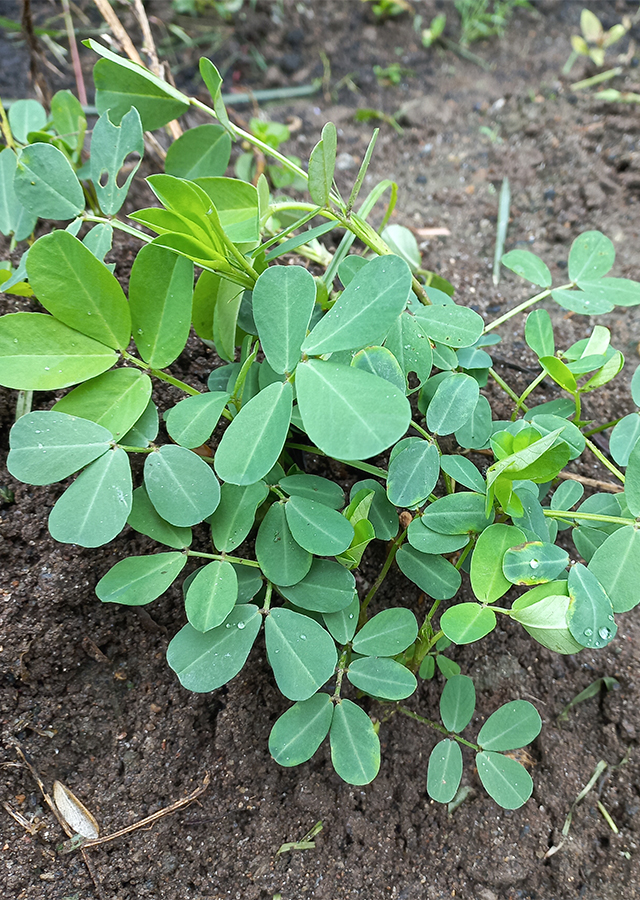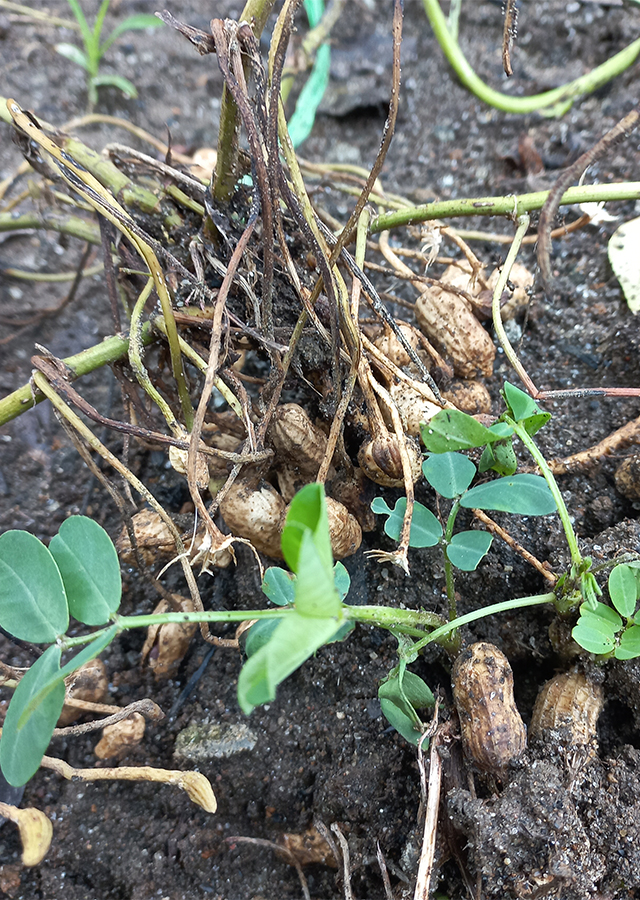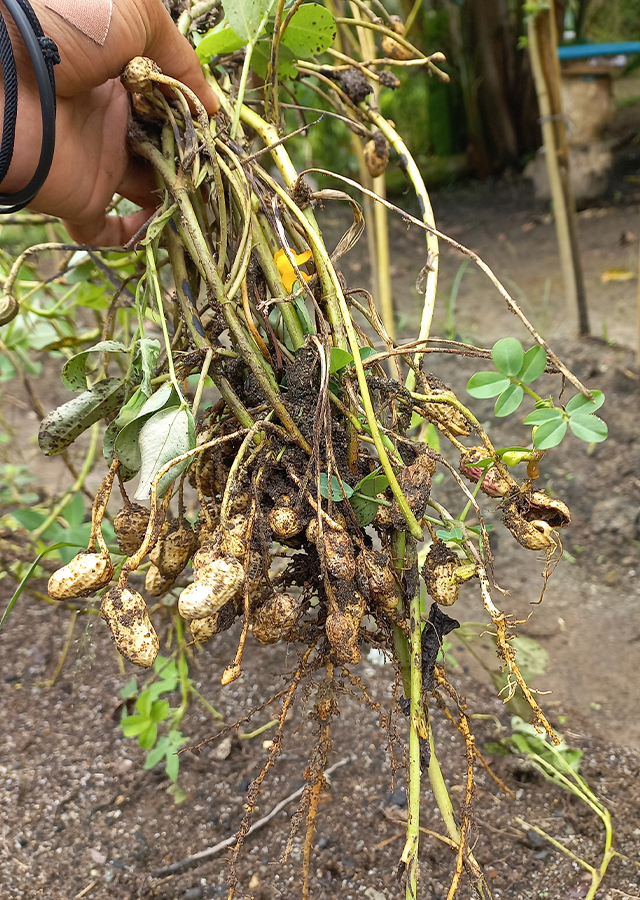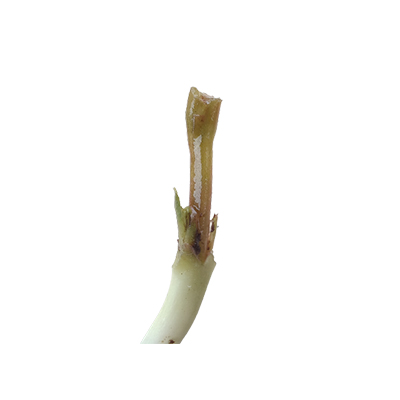Groundnut
Arachis hypogaea L.
Fabaceae
Location in our garden
Vegetable



Synonym
Arachidna hypogaea (L. ) Moench
Arachis africana Lour.
Arachis americana Ten.
Habitus
Herbaceous. an annual plant with erect or prostrate stems up to 70 cm long
Part Used
Leaves
Seeds
Fruit
Sap
Growing Requirements
Full Sunshine
Drought Resistant
Habitat
Roadside
Terrestrial
Overview
Groundnut originated in the area of southern Bolivia and north-western Argentina. It is an ancient crop of the New World and was widely grown in Mexico, Central America and South America in pre-Columbian times. The peanut is a very commonly used food plant, valued mainly for its edible seed and oil, but also having medicinal and other uses. It is widely cultivated throughout the tropics and sub-tropics for its seed, there are many named varieties.
Vernacular Names
Thùa lísong (Thai), Dau phong (Vietnamese), Chang sheng guo (Chinese), Nankinmame (Japanese), Ttang kong (Korean), Fustic swdani (Arabic), Apeneutjie (Afrikaans), Arachide (French), Echte Erdnuss (German).
Agroecology
Peanuts can be grown from the tropics to the warm temperate zone, with commercial crops succeeding between latitudes 40° south and 40° north and up to an elevation of 1,500 m. An annual precipitation in the range 750 - 1,250 mm is preferred, though as little as 500 mm can be sufficient if well distributed. Prefers a light humus-rich well-drained soil in a warm sunny sheltered position, though it will tolerate heavier soils.
Morphology
- Roots - taproot with many lateral roots, up to 135 cm deep, but generally restricted to the upper layers of the soil.
- Stems - erect or prostrate, up to 70 cm long.
- Leaves - arranged spirally, 4-foliolate with two opposite pairs of leaflets; stipules 1.5–4 cm long, with a slender free tip, but fused to the petiole for about half their length; petiole 1.5–7 cm long; petiolules 1–2 mm long; leaflets obovate or elliptical, 1–7 cm × 0.5–3 cm, cuneate-rounded at base, rounded or emarginate and mucronate at apex. Inflorescence an axillary, 2–5-flowered spike.
- Flowers - bisexual, papilionaceous, sessile; receptacle long and slender, pedicel-like, up to 4 cm long; calyx with 4 upper lobes joined, lower lobe free; corolla pale yellow to orange-red, rarely white, standard rounded, wings shorter, keel incurved; stamens (8–)10, alternately with small, globular anthers and larger, oblong anthers, joined at base; ovary superior but situated at base of receptacle tube, style free within the tube, very long, ending in a minute club-shaped stigma.
- Fruits - an oblong or sausage-shaped pod, borne at the tip of an elongated fruit stalk up to 20 cm long, 1–8 cm × 0.5–2 cm, surface constricted to varying degrees between the seeds and reticulately veined, 1– 6-seeded.
- Seeds - cylindrical to ovoid, 1–2 cm × 0.5–1 cm, with pointed or flattened ends, enclosed in a thin papery seed coat ranging in colour from white to deep purple.
Cultivation
Propagated by seed, but vegetative propagation using cuttings is possible. Pre-soak for 12 hours in warm water and sow the seed 5-7 cm deep in situ.
Chemical Constituents
Glycerides of palmitic, oleic, stearic, lignoceric, linoleic, arachidic acids, betaine, choline, arachine, isoflavonoid, pentene-3-ol, geraniol, dihydroxy, dimethoxycoumestan, tannins, saponin, flavonoids, alkaloids, glycosides, beta cyanin, coumarins, quinones, and steroids.
Traditional Medicinal Uses
- Studies have shown antioxidant, anti-inflammatory, hypoglycemic, hypolipidemic, sedating properties
- The oil from the seed is aperient, demulcent, emollient and pectoral and used for bladder conditions.
- Teaspoon of oil in milk used for gonorrhea.
- The seeds have been used in folk medicine as an anti-inflammatory, aphrodisiac and decoagulant.
- In China the nuts are considered demulcent, pectoral, and peptic; the oil aperient and emollient, taken internally in milk for treating gonorrhoea, externally for treating rheumatism.
- In Zimbabwe the peanut is used in folk remedies for plantar warts.
Part Used
Reference Sources
- Fern, Ken. Useful Tropical Plants. (2014). Arachis hypogaea. https://tropical.theferns.info/viewtropical.php?id=Arachis+hypogaea. 30-09-21.
- Stuartxchange. Philippines Medicinal Plant. (2016). Arachis hypogaea. http://www.stuartxchange.org/Mani.html. 30-09-21.
- Plant Resources of Tropical Africa. Arachis hypogaea. https://uses.plantnet-project.org/en/Arachis_hypogaea_(PROTA). 30-09-21.



